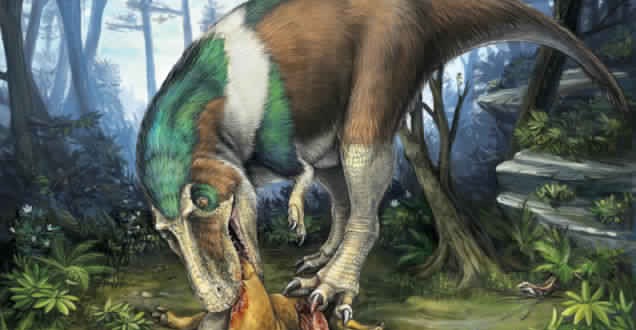The killer machine T Rex and its fellow theropod dinosaurs were successful predators partly due to a unique, deeply serrated tooth structure, new research shows.
Only one reptile living today has the same kind of tooth structure – the three-metre long Komodo dragon from Indonesia.
Like the huge monitor lizard, T. rex would have been able to prey on animals larger than itself with the help of its teeth, say scientists.
And since T. rex grew as long as 13 metres, that means very large indeed.
Saw-edged teeth were unique to theropods, the family of two-legged carnivorous dinosaurs that included T. rex and Allosaurus.
The deep serrations made them much more efficient at ripping flesh and chomping on bones, helping the theropods to prosper as top predators for around 165 million years.
“What is so fascinating to me is that all animal teeth are made from the same building blocks, but the way the blocks fit together to form the structure of the tooth greatly affects how that animal processes food,” said lead scientist Dr Kirstin Brink, from the University of Toronto Mississauga in Canada.
“The hidden complexity of the tooth structure in theropods suggests that they were more efficient at handling prey than previously thought, likely contributing to their success.”
Brink’s team used a scanning electron microscope to study slices of fossilised teeth from eight theropods, including T. rex, Allosaurus, Gorgosaurus and Coelophysis.
Even Coelophysis, one of the first theropods, had the steak knife modification.
The research is published in the journal Scientific Reports.
Agencies/Canadajournal
 Canada Journal – News of the World Articles and videos to bring you the biggest Canadian news stories from across the country every day
Canada Journal – News of the World Articles and videos to bring you the biggest Canadian news stories from across the country every day



